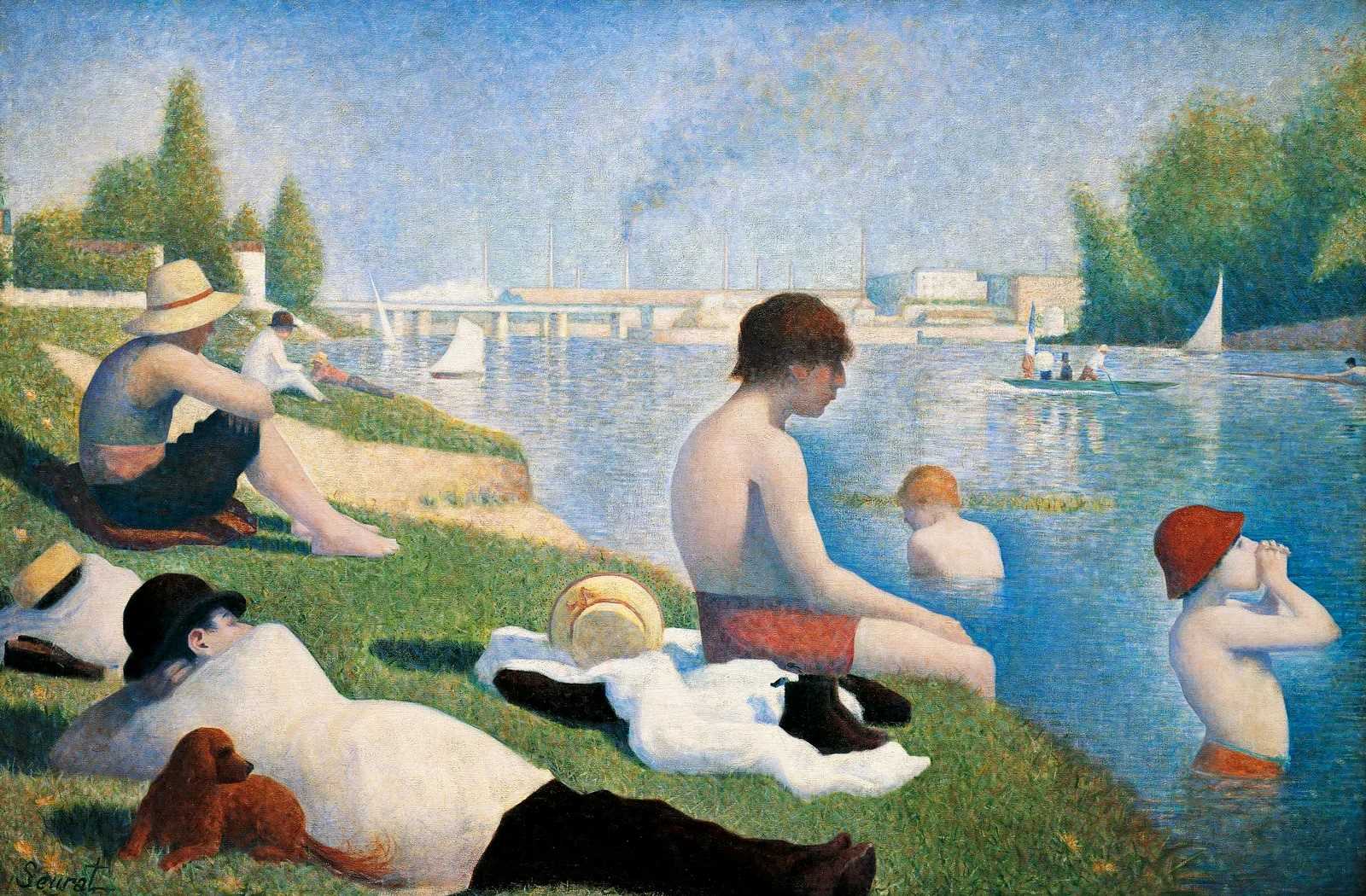
Who was George Seurat? George Seurat was a French post-impressionist painter known for pioneering the technique of pointillism. Born on December 2, 1859, in Paris, Seurat's meticulous approach to art involved painting tiny dots of color that, when viewed from a distance, blended into vibrant images. His most famous work, "A Sunday Afternoon on the Island of La Grande Jatte," showcases this unique style. Seurat's innovative methods and dedication to color theory left a lasting impact on the art world, influencing countless artists. Despite his short life—he died at just 31—Seurat's legacy endures through his groundbreaking contributions to modern art.
Who Was George Seurat?
George Seurat was a French post-Impressionist painter known for his innovative techniques and unique approach to art. His work laid the foundation for the Neo-Impressionist movement. Let's dive into some fascinating facts about this influential artist.
-
Birth and Early Life: George Seurat was born on December 2, 1859, in Paris, France. His father was a legal official, and his mother came from a wealthy family.
-
Art Education: Seurat studied at the prestigious École des Beaux-Arts in Paris, where he was influenced by classical art and the works of the Old Masters.
-
Military Service: Before fully committing to his art career, Seurat served a year in the military, which interrupted his studies but also gave him time to reflect on his artistic direction.
Seurat's Unique Techniques
Seurat is best known for developing a technique called Pointillism, which involves painting with small dots of color. This method creates a vibrant and luminous effect when viewed from a distance.
-
Pointillism Pioneer: Seurat's technique of Pointillism was groundbreaking. He meticulously applied tiny dots of pure color to the canvas, allowing the viewer's eye to blend them.
-
Scientific Approach: Seurat was influenced by scientific theories of color and optics. He believed that placing contrasting colors next to each other would make them appear more vibrant.
-
Chromoluminarism: Another term for Pointillism, Chromoluminarism emphasizes the scientific aspect of Seurat's technique, focusing on color and light.
Famous Works
Seurat's paintings are celebrated for their meticulous detail and innovative use of color. Here are some of his most famous works.
-
A Sunday Afternoon on the Island of La Grande Jatte: This is Seurat's most famous painting, completed in 1886. It depicts Parisians enjoying a leisurely day by the river.
-
Bathers at Asnières: Painted in 1884, this work shows young men relaxing by the Seine River. It was Seurat's first major painting and showcased his developing Pointillist technique.
-
The Circus: One of Seurat's last works, completed in 1891, depicts a lively circus scene. The painting is unfinished, as Seurat died before he could complete it.
Personal Life and Legacy
Seurat's personal life was as intriguing as his art. His dedication to his craft and his untimely death have left a lasting impact on the art world.
-
Secret Relationship: Seurat had a secret relationship with Madeleine Knobloch, a model. They had a son together, but Seurat kept this part of his life private.
-
Early Death: Seurat died young, at the age of 31, on March 29, 1891. The cause of his death remains uncertain, with theories ranging from meningitis to pneumonia.
-
Influence on Modern Art: Seurat's techniques influenced many artists, including Vincent van Gogh and Paul Signac. His work paved the way for modern art movements like Cubism and Fauvism.
Seurat's Impact on Art Theory
Seurat's innovative techniques and scientific approach to art have had a lasting impact on art theory and practice.
-
Divisionism: Seurat's technique of separating colors into individual dots is also known as Divisionism. This method influenced many artists and became a key aspect of Neo-Impressionism.
-
Optical Mixing: Seurat's work demonstrated the concept of optical mixing, where the viewer's eye blends colors placed next to each other, creating a more vibrant effect.
-
Color Theory: Seurat's studies in color theory were ahead of his time. He was influenced by the works of Michel Eugène Chevreul and Ogden Rood, who studied the science of color perception.
Exhibitions and Recognition
Seurat's work was both celebrated and criticized during his lifetime. His unique style and dedication to his craft earned him a place in art history.
-
Salon des Indépendants: Seurat co-founded the Salon des Indépendants in 1884, an annual exhibition that provided a platform for artists outside the traditional Salon.
-
Mixed Reviews: While some critics praised Seurat's innovative techniques, others were less enthusiastic. His work often sparked debate and discussion in the art community.
-
Posthumous Fame: After his death, Seurat's work gained more recognition. Today, his paintings are celebrated for their technical brilliance and artistic vision.
Fun Facts About Seurat
Beyond his serious dedication to art, there are some fun and quirky facts about Seurat that add to his intriguing persona.
-
Meticulous Nature: Seurat was known for his meticulous nature. He would spend hours perfecting a single section of his paintings, ensuring each dot was placed precisely.
-
Sketches and Studies: Before starting a major painting, Seurat would create numerous sketches and studies. This preparation helped him achieve the level of detail and precision he desired.
-
Influence of Music: Seurat was influenced by music, particularly the works of Richard Wagner. He believed that art, like music, should evoke emotions and create harmony.
-
Artistic Circle: Seurat was part of an artistic circle that included other notable artists like Paul Signac and Camille Pissarro. These friendships influenced his work and helped him develop his techniques.
-
Legacy in Popular Culture: Seurat's work has influenced popular culture, including the musical "Sunday in the Park with George" by Stephen Sondheim, which explores Seurat's life and artistic process.
Final Brushstrokes on Seurat's Legacy
George Seurat's innovative techniques and meticulous approach to art left a lasting impact on the world of painting. His pioneering use of pointillism, a technique involving tiny dots of color, created vibrant and detailed works that continue to captivate audiences. Seurat's dedication to scientific principles in art, such as color theory and optical mixing, set him apart from his contemporaries. Despite his short life, he produced masterpieces like "A Sunday Afternoon on the Island of La Grande Jatte," which remains iconic. His influence extends beyond his own work, inspiring future generations of artists to explore new methods and ideas. Seurat's legacy is a testament to the power of innovation and precision in art, proving that even the smallest details can create a profound impact. His contributions to the art world will be remembered for generations.
Was this page helpful?
Our commitment to delivering trustworthy and engaging content is at the heart of what we do. Each fact on our site is contributed by real users like you, bringing a wealth of diverse insights and information. To ensure the highest standards of accuracy and reliability, our dedicated editors meticulously review each submission. This process guarantees that the facts we share are not only fascinating but also credible. Trust in our commitment to quality and authenticity as you explore and learn with us.


